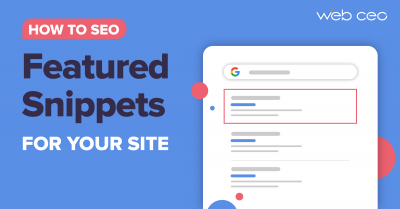
Do you remember how exciting it was to eat only candies, cakes and cookies, when you were a child? And now you are a grown-up and know that it sounds better than it is. The same is true for SEO. Too much frosting, I mean optimization, may harm your website’s ranking. Here are 5 rules that help you avoid over-optimization and possible penalties caused by it.
These 5 rules may be summarized in one major rule: create your website for visitors, not for search engines. This is not new, but it’s how things really work today. And now some details:
Create content for people.
Use your “natural voice” instead of creating content for the keywords. Google’s primary goal is to provide the best possible search results to its users and good quality content is always going to win out in the long run. Google Panda provided plenty of evidence that content quality will be a major focus going forward, so be sure to write your content to appeal to your visitors – not just the search engines.
Do not stuff your website’s footer with links.
Large sets of links in a footer look really spammy. No one would ever click on them. Besides, site wide links nowadays have no weight at all. If you really need to get anchor text on pages, find natural ways to put it in the content itself or in the real page menu.
Use natural anchor texts.
It’s important to consider the structure of links. When you use the same anchor text for each link you create, search engines may suspect you are spamming. Be sure to modify your anchor text to create a natural looking link profile: on each iteration make it longer, shorter, change some words. This is a much more effective way to do SEO than always using the same anchors.
Avoid links from bad sources.
It’s really hard to control if you’ve already gotten links from bad places. But you can avoid link farms, reciprocal link schemes and article marketing sites when you are building new links. Besides, getting too many backlinks too quickly will always look suspicious to the search engines.
Make every page useful.
Each page on your site needs to serve a purpose for your visitors. The days of creating lots of similar pages that are solely for the search engines to rank but have no tangible value for visitors except to trick them to come to your site (and possibly click an ad) is coming to an end. Visitors don’t like to see multiple pages on a website for nearly identical things–they get confused and think you’re playing games with them, and so does Google.
By integrating WebCEO’s SEO Content Assistant into your strategy, you can more easily adhere to these guidelines, ensuring your content is both user-friendly and optimized for search engines, without falling into the trap of over-optimization.



